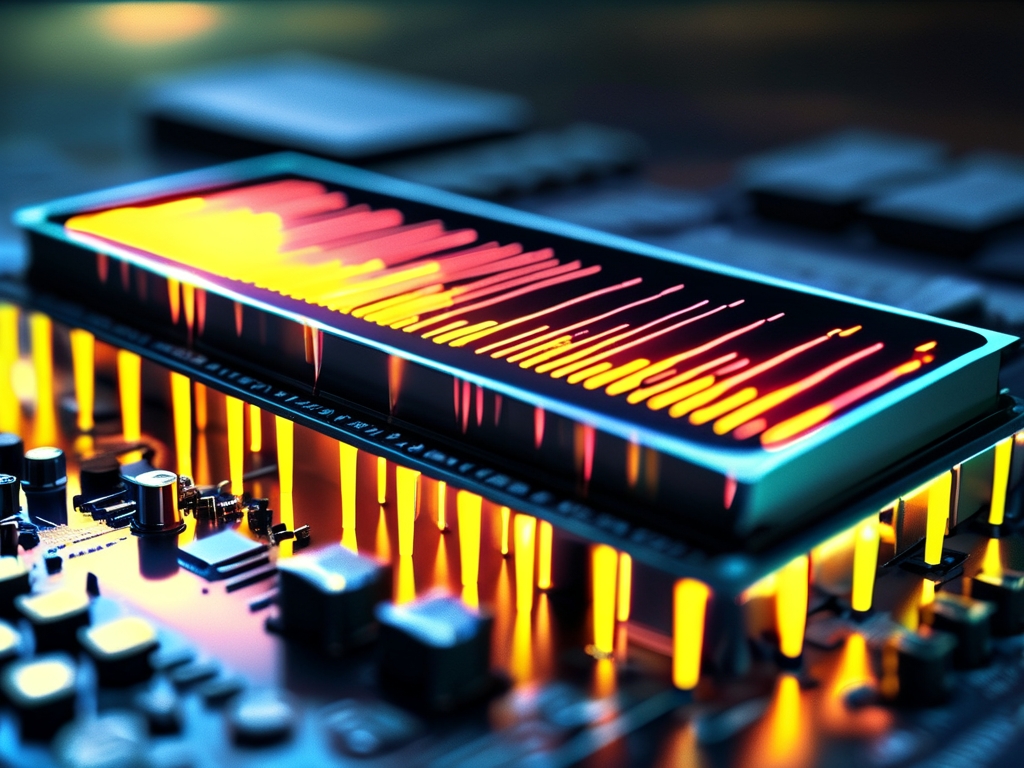In modern computing systems, memory modules play a critical role in ensuring efficient data processing and system stability. One often-overlooked aspect of memory design is the calculation of maximum current values, which directly impacts power delivery, thermal management, and reliability. This article explores the formula for determining the maximum current in memory modules, its derivation, and practical applications in hardware engineering.

The Importance of Maximum Current Calculation
Memory modules, such as DRAM or SRAM, require precise voltage regulation to operate correctly. Exceeding the maximum current threshold can lead to overheating, voltage drops, or even permanent damage to the memory cells. Engineers must calculate this value during the design phase to select appropriate power supplies, decoupling capacitors, and PCB trace widths. The formula serves as a foundational tool for optimizing performance while ensuring safety margins.
Key Components of the Formula
The maximum current value ((I_{max})) for a memory module depends on three primary factors:
- Operating Voltage ((V)): The nominal voltage supplied to the memory chip.
- Power Dissipation ((P)): The total power consumed by the module under peak load.
- Efficiency Factor ((\eta)): Accounting for losses in voltage regulators and circuit pathways.
The basic formula is derived from the power equation:
[
I_{max} = \frac{P}{V \times \eta}
]
Deriving the Formula
Starting with Ohm's Law ((P = V \times I)), the current can be isolated as (I = P / V). However, real-world systems experience inefficiencies due to resistive losses in traces, switching noise, and regulator limitations. Introducing the efficiency factor (\eta) (typically between 0.7 and 0.9 for modern designs) refines the calculation to reflect practical scenarios. For example, if a memory module consumes 5W at 1.2V with an efficiency of 85%, the maximum current becomes:
[
I_{max} = \frac{5}{1.2 \times 0.85} \approx 4.9A
]
Variables in Detail
-
Power Dissipation ((P)):
- Determined by the memory's operational state (idle, read, write, or refresh cycles).
- Manufacturers provide worst-case power values in datasheets.
- Dynamic power ((P{dynamic})) depends on frequency and capacitive loading:
[ P{dynamic} = C \times V^2 \times f ]
where (C) is the effective capacitance, (V) is voltage, and (f) is the switching frequency.
-
Voltage ((V)):
- Modern DDR5 modules operate at 1.1V, while LPDDR5 may use 0.5V.
- Voltage tolerances (e.g., ±5%) must be factored into safety margins.
-
Efficiency ((\eta)):
- Influenced by PCB layout, regulator quality, and temperature.
- Multi-phase voltage regulators improve (\eta) by distributing load currents.
Practical Considerations
- Thermal Limits: High current increases Joule heating ((P = I^2 \times R)). Designers must ensure heat sinks or airflow can dissipate this energy.
- Voltage Drop: Long PCB traces introduce resistance, causing voltage sag. The formula (V{drop} = I{max} \times R_{trace}) helps determine acceptable trace widths.
- Transient Currents: Sudden workload spikes may briefly exceed (I_{max}). Decoupling capacitors mitigate this by storing localized charge.
Case Study: DDR4 Module Design
Consider a DDR4 module rated for 4.5W at 1.2V with a 90% efficient power delivery network (PDN):
[
I{max} = \frac{4.5}{1.2 \times 0.9} = 4.17A
]
The PDN must handle this current without exceeding a 50mV voltage drop. Using a 10mΩ PCB trace resistance:
[
V{drop} = 4.17A \times 0.01Ω = 0.0417V
]
This falls within tolerance, validating the design.
Advanced Scenarios
- Multi-Rank Configurations: Systems with multiple memory ranks share current loads, requiring per-rank calculations.
- Overclocking: Increasing frequency or voltage boosts performance but escalates (I_{max}), demanding robust cooling.
- Low-Power Modes: Sleep states reduce (I_{max}) but introduce wake-up current surges that must be anticipated.
Tools and Simulations
Software like SPICE or Ansys SIwave allows engineers to model current distribution and validate calculations. These tools account for parasitic elements and transient behaviors missed in manual computations.
Mastering the maximum current calculation formula empowers engineers to design memory systems that balance performance, efficiency, and reliability. As memory technologies evolve toward higher speeds and lower voltages, precision in these calculations becomes even more critical. By integrating theoretical models with practical constraints, designers can innovate while avoiding costly pitfalls.
References
- JEDEC Standard JESD79-4B (DDR4 SDRAM)
- "Power Integrity for Memory Interfaces" by Istvan Novak
- IEEE Transactions on Circuits and Systems for VLSI Design


